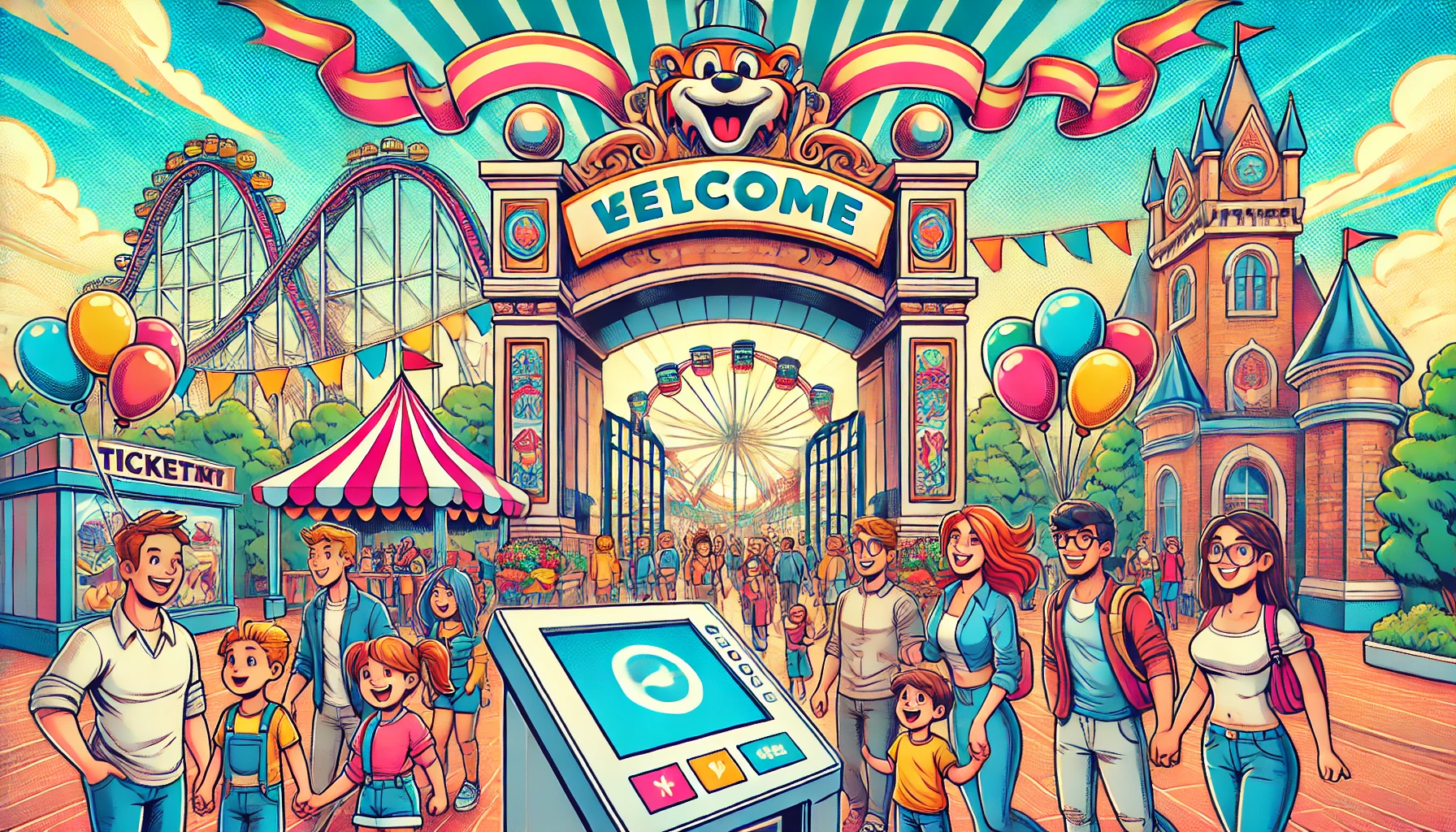Recreation is essential in today’s fast-paced world, offering stress relief and quality time with loved ones. As more people seek entertainment, theme and amusement parks are booming. Theme parks revolve around specific concepts, creating immersive experiences, while amusement parks focus on thrill rides and general entertainment, with popularity of theme parks keep growing.
The rising need for mental well-being, experiential travel, and advanced technology like VR, AI, and smart queues drive theme park popularity. Social media plays a key role, with influencers and viral trends drawing visitors. Families find these parks ideal for bonding, as they cater to all ages. Seasonal events, global expansion, and sustainability efforts further enhance their appeal.
Popularity Amusement Theme Park Trends
The popularity of amusement theme parks continues to grow as people seek thrilling experiences and immersive environments. Innovative attractions, engaging storytelling, and the integration of cutting-edge technology contribute to their success. Theme parks leverage nostalgia, beloved characters, and adventure-based narratives to keep visitors engaged and excited.
Popularity of Theme Parks and Their Economic Benefits
The popularity of theme parks has a significant impact on the economy. Theme parks generate jobs, boost tourism, and drive infrastructure growth. They create employment opportunities for ride operators, engineers, performers, and hospitality staff. Nearby businesses, such as hotels and restaurants, also benefit from increased visitor traffic. However, challenges like high operational costs, digital entertainment competition, and global crises require constant adaptation.
How Technology is Transforming Theme Parks

Technology has revolutionized theme parks, making them more interactive and immersive. Virtual reality (VR) and augmented reality (AR) enhance attractions, allowing guests to experience fantasy worlds beyond physical rides.
AI-driven personalization tailors visitor experiences. Smart algorithms suggest rides, shows, and dining options based on preferences. Mobile apps with AI assistants provide real-time updates, virtual maps, and seamless ticketing.
Smart queue systems improve efficiency. Virtual queues replace long wait times, enabling guests to reserve ride slots via mobile devices and enjoy more attractions.
The Power of Social Media in Theme Park Promotion
Social media has become a major marketing tool for theme parks. Viral trends, influencer marketing, and user-generated content drive engagement and attract millions of visitors. Parks encourage guests to share experiences by offering Instagrammable spots, interactive photo booths, and themed hashtags.
Platforms like TikTok and YouTube showcase ride experiences, reviews, and behind-the-scenes content, sparking curiosity and excitement. Limited-time events and exclusive previews create urgency, motivating visitors to plan trips sooner.
Customer feedback on social media helps parks improve attractions and services, boosting satisfaction and loyalty.
SEO Strategies for Theme Park Visibility

Search engine optimization (SEO) is crucial for theme park success. Here are key SEO strategies:
- Keyword Optimization: Parks use high-traffic keywords like “best theme parks,” “family-friendly amusement parks,” and “thrilling roller coasters” to attract organic traffic.
- Content Marketing: Blogs about new attractions, seasonal events, and visitor experiences improve search rankings and keep audiences engaged.
- Video SEO: YouTube videos are optimized with relevant tags, descriptions, and transcriptions for better discoverability.
- Local SEO: Parks optimize Google My Business listings, encourage reviews, and ensure accurate location details to appear in local searches.
- Mobile Optimization: Since most visitors search for parks on smartphones, mobile-friendly websites are essential.
Sustainability Initiatives in Order To Boost popularity of theme parks
Theme parks are adopting eco-friendly practices to reduce their carbon footprint. Some initiatives include:
- Renewable Energy: Solar panels and wind turbines power rides and facilities.
- Water Conservation: Rainwater harvesting and efficient filtration systems reduce waste.
- Eco-Friendly Construction: Sustainable materials and energy-efficient lighting are used in new developments.
- Waste Reduction: Biodegradable packaging and recycling programs promote environmental responsibility.
- Wildlife Conservation: Some parks offer educational programs on environmental preservation.
These initiatives attract eco-conscious travelers looking for sustainable entertainment options.
Challenges and Competition in the Theme Park Industry

Despite their success, theme parks face significant challenges:
- Rising Costs: Maintenance, staffing, and technological upgrades increase expenses.
- Digital Competition: Streaming services and gaming reduce consumer interest in physical entertainment.
- Economic and Global Crises: Events like pandemics impact visitor numbers and revenue.
To stay competitive, parks must innovate. Seasonal festivals, interactive attractions, and partnerships with popular franchises help maintain excitement and attract new audiences.
The Future of Theme Parks
The future of theme parks is bright with emerging technologies:
- Metaverse Integration: Virtual park experiences will allow guests to explore attractions from anywhere in the world.
- Gamification: Interactive, story-driven experiences will engage visitors more deeply.
- Seamless Entry Systems: Facial recognition and biometric scanning will improve security and reduce ticket fraud.
- AI-Powered Attractions: Holographic projections and AI-driven characters will enhance storytelling and immersion.
Conclusion
Theme parks continue to evolve with technology, personalization, and sustainability. As consumer preferences shift, parks must adapt to meet demand. Whether you seek adrenaline-pumping rides or family-friendly adventures, theme parks offer the perfect escape.
Are you ready to embark on your next unforgettable theme park journey?

Tinggalkan Balasan